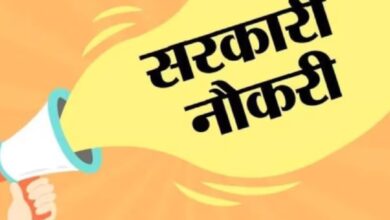In A Rush To Discard Chinese Goods & Services, Why Indians Should Immediately Stop Using PayTm?
What is PayTM?:
Paytm Mobile, is an Indian e-commerce payment system and financial technology company based in Noida, fondly abbreviated to PayTM and pronounced similar to ATM. It supports 11 native Indian languages and offers online uses, with examples including but not limited to recharges, bill payments, and event bookings. It is also integrated with an in-store payment facility that can be utilised to quickly pay in any shop with a PayTM QR Code.
According to sources from within the company, there are over seven million merchants across India utilizing their QR facility to accept bank-to-bank money transfers. Founded in August 2010 with a USD 2 million investment, it started off as a prepaid mobile and DTH recharge platform. Later growths and expansions have made it into the e-commerce giant that it is today.
Investor circle of PayTM:
The USD 10 billion giant’s first investment was provided by its founder, Vijay Shekhar Sharma, with a relatively measly USD 2 million. This was enough to get the company up and running at the start. As the business expanded to cover more ground in the e-commerce industry, money poured in to help and accelerate the growth of the organization.
The current investment standings are as follows: the founder, Vijay Shekhar Sharma, holds a 14.67% stake in the company. Ant Financials and SoftBank Vision Fund hold 29.71% and 19.63% each, SAIF Partners hold an 18.56%, AGH holding 7.18%, Berkshire Hathaway – pioneer investor Warren Buffett’s company – holds 2.76%. The rest 7.49% is held by various institutions.
Apart from money-wise growth, PayTM has also grown massively in terms of networks and partnerships. Its PayTM Wallet product was added as a mode of payment by Indian Railways and Uber, and began powering the payment gateway for Indian Railways gradually. It networks with all of its merchants with the Business With PayTM applications, helping it cross the seven million threshold. It is also partners with AGTech in mobile gaming, and Citibank in credit card services.
Chinese investment in PayTM:
Both major shareholding corporates of PayTM – Ant Financials of the Alibaba Group, and SoftBank Vision Fund – are China-based organizations, with a combined shareholding stake of 49.34%. This means that almost all major decisions regarding their businesses and other dependencies are in the hands of two Chinese venture capital corporate organizations, unless every other institution holding PayTM shares decide to go against them.
Why is this significant when it comes to deciding whether or not to boycott PayTM as a service?
First, the rise of PayTM was not by capturing the market. The demonetization night of November 2016 was when all online payment platforms, including PayTM, swooped in for customers and to expand their client bases. The denouncement of major currency carrying notes all across the nation within a single night, alongwith a mismanaged implementation system brought the entire direct payment sector to a halt.
PayTM, along with its fellow competitors, were not an option waiting to be chosen after that night – if the economy had to chug along, consumers had them as their only choice, paradoxically. This capitalization of the market by opting into a surveillance state is not the best long-term way to capture a market – in a free country, it must be an unenforced choice.
Who is boycotting Chinese products?
As of June 10, the Confederation of All India Traders – abbreviated as CAIT hereforth, a representative of over forty thousand trade associations involving seventy million traders – has denounced and declared to boycott over three thousand Chinese products. A national campaign by the name of “Indian Goods – Our Pride” has been launched to support the movement as well.
CAIT is also planning to run a nationwide campaign through social media to connect more people with the campaign, the nuances of which will be inculcated to traders via video conference. Under this campaign, they will motivate both not selling of Chinese goods and to fructify the Prime Minister’s Vocal For Local campaign by promoting merchants to sell more indigenous goods made in India.
The comprehensive list of three thousand products are fast-moving consumer goods, toys, festive goods, fabrics and textiles, stationery, paper, food, electrical and electronic items, builder hardware, etc. They quoted that “they are products for which Indian substitutes and alternatives are easily available, and Indian customers will also not mind [sic] because all those things are already made in India.”
The CAIT stated that Indian manufacturers play an important role in the boycotting of Chinese products, and that they will work with Indian manufacturers to promote the use of their indigenous goods nationwide.
Is this the smart way to an Atmanirbhar India?
While China and India may be trade partners, the trade is visibly skewed heavily in favour of China, initiating a trade war when Indian manufacturing ability is limited and unable to help the situation the nation is in.
PM Narendra Modi blew the conch for an Atmanirbhar India in the month of May, ever since which a hidden dissent has been on the rise and developing amongst the masses against imported products, especially Chinese. The specific targetting towards China and its products point towards its guilt behind manufacturing and spreading n-coronavirus – which is unverified and inconclusive as a statement.
The question lingering in the air is this – is isolating ourselves from such a trading giant a plausible way to protest?
India is the biggest importer of Chinese consumer goods, according to trade figures, which puts India at a huge trade deficit. During the financial year of 2018-2019, India’s exports total up to USD 16.7 billion, while imports added up to a larger USD 70.3 billion.
On the other hand, China’s imports from India account for 2% for their total imports – barely a dent should we decide to boycott the trade agreements. This leads to one visible conclusion – China is India’s largest trading partner, but the favour heavily leans towards China. Such a counter-intuitive situation has led to a trade war between the countries, which may not favour India at all.
Wrapping up the debate:
In all, we must work towards a better nation, even if it means making certain patriotic sacrifices. We, as a people, must survive independently before even the thought of war crosses our mind. And with the current situation at hand, instant boycotting of trades with China is equivalent to biting the hand that feeds you – our current dependencies on China are too much to consider trudging through a battle that we are positioned to lose.
There are private Indian companies with major Chinese investments running through them, keeping them afloat as the organizations they are. China’s investments account for over USD 3.6 billion. Indian VC financiers, on the other hand, cannot guarantee USD 100 million commitments needed to finance start-ups through their early losses.
Smartphone apps with Chinese investments constitute about 50% of the top apps downloaded, with 17.09% market share in mobile browsers and 21.38% market share in the mobile phone segment. They also have sizeable investments in OTT platforms and other streaming services, proving the existence of their deep roots within India’s tech sector, and is growing substantially everyday.
Finally, the present Foreign Direct Investment equity inflows from China to India stand at 0.51% at USD 2.4 billion during the years between April 2000 and March 2020. This inflow of FDI from China to India during the period of 2014 to 2019 is some of the highest that India has seen over its history.
Given such a delicate position that India is in, as opposed to China’s firm and positive stance, it is better to take hits to “national pride” in a safe and diplomatic manner, rather than lose out on all of it in a full-blown trade war, just to feed our patriotic attitude.




